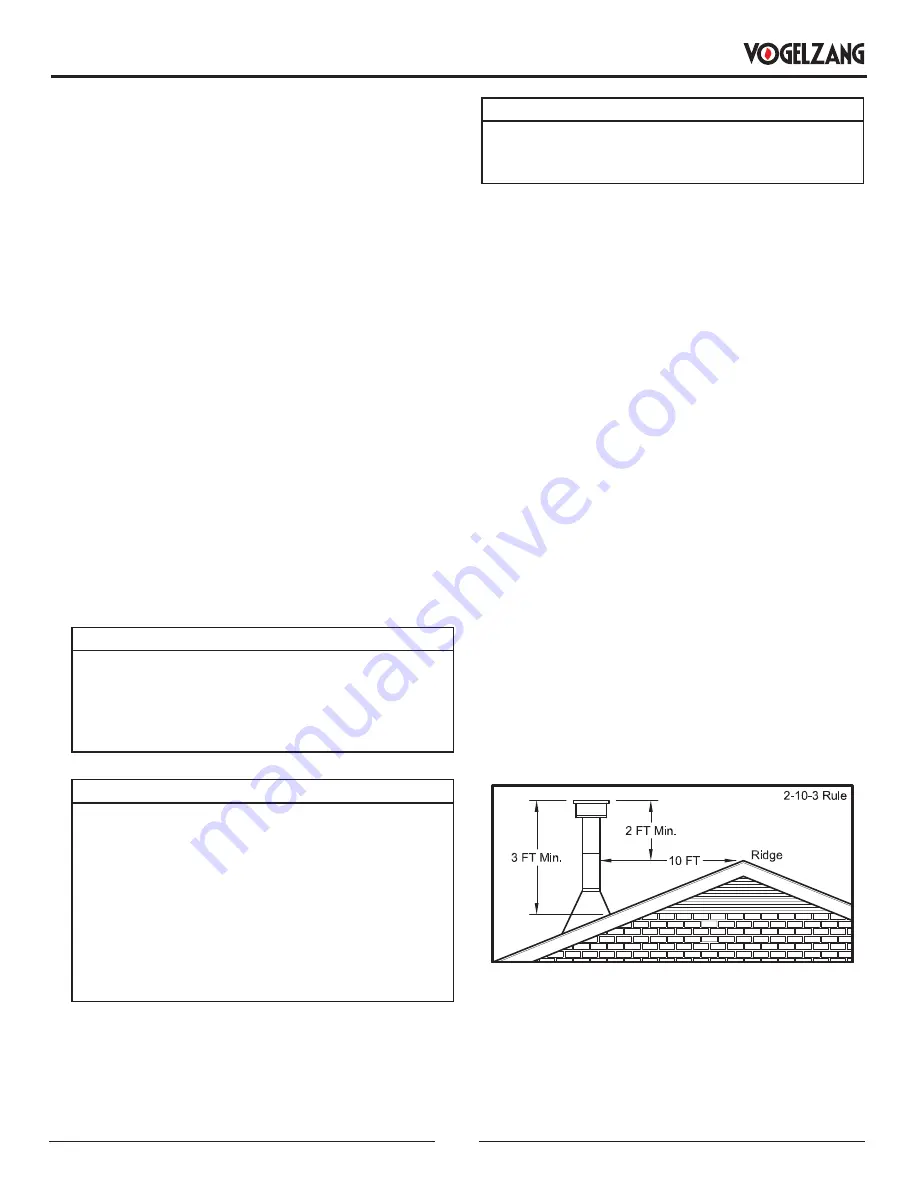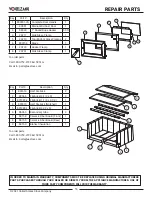
© 2021 United States Stove Company
9
IMPORTANCE OF PROPER DRAFT
Draft is the force which moves air from the appliance up
through the chimney. The amount of draft in your chimney
depends on the length of the chimney, local geography,
nearby obstructions and other factors. Too much draft
may cause excessive temperatures in the appliance.
Inadequate draft may cause backpuffing into the room and
“plugging” of the chimney. Inadequate draft will cause the
appliance to leak smoke into the room through appliance
and chimney connector joints. An uncontrollable burn or
excessive temperature indicates excessive draft.
Chimneys perform two functions:
1.
As a means of exhausting smoke and flue gases
which are the result of fuel combustion.
2. The chimney provides “draft,” which allows oxygen to
be continuously introduced into the appliance, so that
proper combustion is possible. This stove relies on
natural draft to operate.
NOTICE: Always provide a source of fresh air into the room
where the stove is located. Failure to do so may result in
air starvation of other fuel burning appliances and the
possible development of hazardous conditions, fire, or
death.
IMPORTANT INSTALLATION POINTS
WARNING:
BE SURE YOUR CHIMNEY IS SAFELY CONSTRUCTED
AND IN GOOD REPAIR. HAVE THE CHIMNEY INSPECTED
BY THE FIRE DEPARTMENT OR A QUALIFIED
INSPECTOR. YOUR INSURANCE COMPANY SHOULD
BE ABLE TO RECOMMEND A QUALIFIED INSPECTOR.
WARNING:
CANADA INSTALLATIONS REQUIRES THAT THIS
FIREPLACE MUST BE INSTALLED WITH A CONTINUOUS
CHIMNEY LINER OF 6 INCH DIAMETER EXTENDING
FROM THE FIREPLACE INSERT TO THE TOP OF THE
CHIMNEY. THE CHIMNEY LINER MUST CONFORM TO
THE CLASS 3 REQUIREMENTS OF CAN/ULC-S635,
STANDARD FOR LINING SYSTEMS FOR EXISTING
MASONRY OR FACTORY-BUILT CHIMNEYS AND
VENTS, OR CAN/ULC-S640, STANDARD FOR LINING
SYSTEMS FOR NEW MASONRY CHIMNEYS.
WARNING:
PERMANENTLY SEAL ANY OPENING BETWEEN THE
MASONRY OF THE FIREPLACE AND THE FACING
MASONRY.
1.
Size chimney flue to appliance collar. This stove
requires a minimum 6” diameter flue.
2. Never connect this unit to a chimney serving another
appliance.
3. The chimney must meet all minimum height
requirements.
4. Never use a chimney to ventilate a cellar or basement.
Contact your local building authority for approved
methods of installation and any necessary permits and/
or inspections.
MASONRY CHIMNEY
Before using an existing masonry chimney, clean the
chimney, inspect the flue liner, and make any repairs
needed to be sure it is safe to use. As mentioned previously,
this appliance requires a continuous stainless steel liner
from the appliance collar to the chimney cap. Make repairs
before attaching the stove. The connector stove pipe and
fittings you will need to connect directly to a masonry
chimney are detailed in the installation instructions. If
the fireplace chimney must go through a combustible
wall before entering the main chimney, consult a qualified
mason or chimney dealer regarding proper materials
that meet all local building and fire authority codes. The
installation must conform to local building and fire codes
and latest edition of NFPA 211. If there is a cleanout
opening in the base of the chimney, close it tightly.
INSTALLATION










































